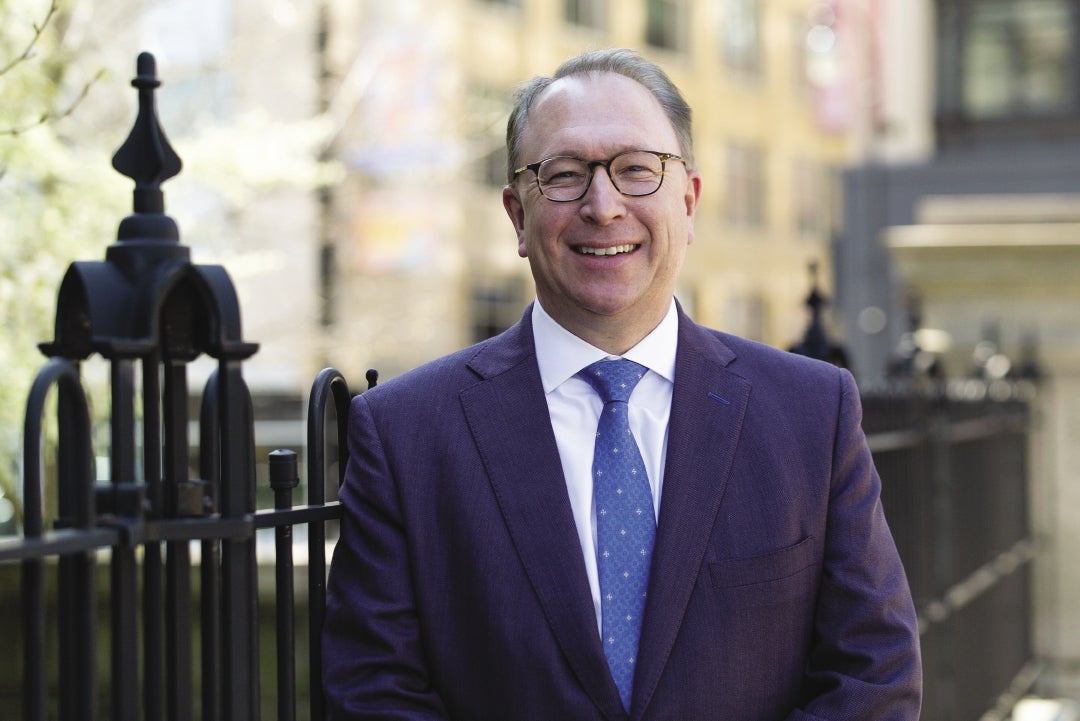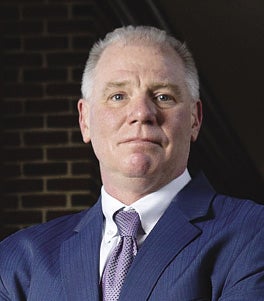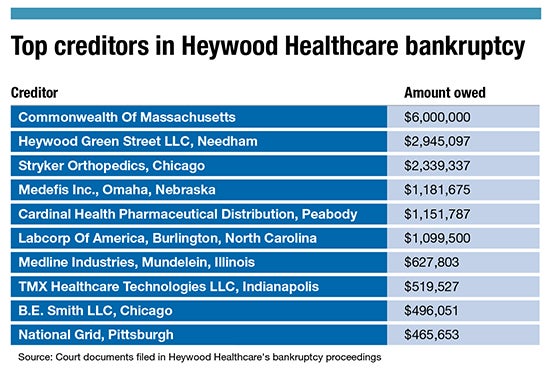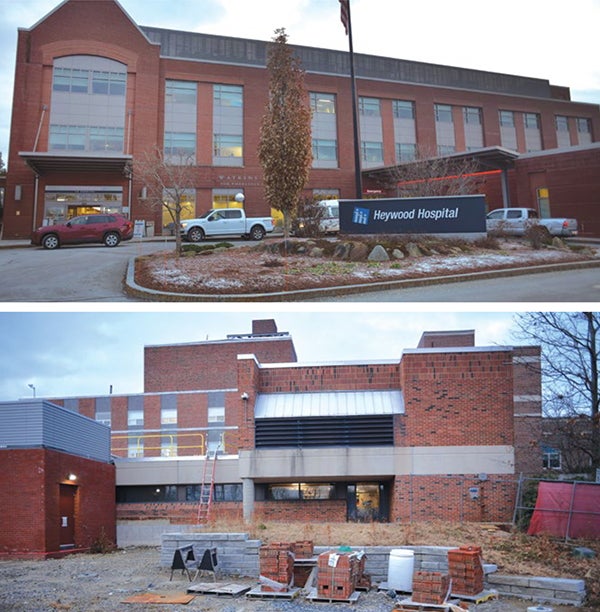“I’ve never been as worried about health care as I am right now.”
Get Instant Access to This Article
Subscribe to Worcester Business Journal and get immediate access to all of our subscriber-only content and much more.
- Critical Central Massachusetts business news updated daily.
- Immediate access to all subscriber-only content on our website.
- Bi-weekly print or digital editions of our award-winning publication.
- Special bonus issues like the WBJ Book of Lists.
- Exclusive ticket prize draws for our in-person events.
Click here to purchase a paywall bypass link for this article.
When Heywood Healthcare, with its hospitals in Gardner and Athol, filed for bankruptcy on the first of October, it was not without warning that the system was in a tough spot.

To start the year, UMass Memorial Health, the largest healthcare system in Central Massachusetts, elected not to go through with a planned merger with Heywood, citing a difficult healthcare environment. In June, the hospital abruptly replaced 12-year President and CEO Winfield Brown with two co-CEOs. Later that month, the hospital paused construction on its new $29-million surgical pavilion, citing a need to protect partner and community investments.
Heywood is not alone in financial challenges. Last year was the most difficult in terms of overall hospital finances, according to the Massachusetts Center for Health Information and Analysis Acute Hospital Financial Performance 2022 report. Statewide, median acute hospital operating margin was -1.3%. So far in fiscal 2023, 71% of reporting hospital health systems experienced negative operating margins, according to CHIA data.

“Hospitals in Massachusetts and across the country remain under extreme financial pressure,” said Daniel McHale, vice president of healthcare finance and policy for the Massachusetts Health & Hospital Association.
Losses in revenue and increased expenses have been an accumulating problem since the start of the COVID pandemic, said McHale, and how each hospital navigates viability under the climate has to be tailored.

Central Massachusetts is worse off than other parts of the state, said Dr. Eric Dickson, president and CEO of UMass Memorial, which is based in Worcester. This is the worst health care in the region has ever been, he said.
“I’ve never been as worried about health care as I am right now,” said Dickson.
All solutions are long term, Dickson said. Addressing root causes, like extended hospital stays and staffing shortages, must be coupled by coordination between healthcare systems, akin to the level that propelled the industry through the pandemic.
Restructuring through bankruptcy
Heywood filed for protection with a petition to the U.S. Bankruptcy Court for the District of Massachusetts under Chapter 11 of the Bankruptcy Code, often dubbed a reorganization bankruptcy, where businesses often emerge financially stronger after the bankruptcy by shedding debts and reaching new agreements with stakeholders. The two Heywood hospitals will remain open and operational throughout the resulting proceedings as it proposes a plan to reorder affairs and pay creditors back over time.
“To become financially viable, we must negotiate fair rates with payors, right-size operations, and reduce expenses. Rising labor costs and supply costs, increasing costs of living and operating in a small market makes it difficult for a small independent hospital to remain competitive,” Dawn Casavant, vice president of strategy and external affairs at Heywood Healthcare, wrote in an email to WBJ.
Heywood has $76.7 million in outstanding debt obligations, mostly owed to state agency MassDevelopment, according to its bankruptcy filing. The hospital system owes another $31.3 million to its top 20 creditors. Separately, Heywood and related parties have been sued for $9 million over unpaid work at the now-paused surgical pavilion project.
“Chapter 11 allows us to address historical and out-of-market contracts and reduce expenses while optimizing services,” said Casavant.
The hospital is committed to staying open, but that may require the dialing back of some services, said Casavant.

The merger that never was
When UMass Memorial elected not to go through with the merger in January, it was because Heywood was significantly worse off financially than UMass had previously believed. UMass ducked out before the step that would require it to guarantee Heywood’s debts, said Dickson, but they remained heavily engaged with one another to try to ensure access to care for people across Central Massachusetts, he said.
Hospitals like Heywood rely on Medicare and Medicaid payments from a significant portion of patients have extra challenges in a difficult financial landscape, because unlike with private insurers, hospitals can’t raise rates for public insurance reimbursements, Dickson said.
“They were kind of doomed,” he said.
At Heywood, more than 67% of patients are covered by Medicare or Medicaid, said Casavant. Heywood is consider by CHIA to be a High Public Payor hospital, meaning 63% or more of charges come from public payers.
“As a High Public Payor community hospital, we cannot be everything to everyone and expect financial stability. We continue to evaluate the needs of our community while simultaneously right sizing operations. Ensuring every patient we touch receives the highest quality care is the highest priority,” Casavant said.
Dickson said Heywood is not the only hospital on the verge of having to file for bankruptcy.
“I don’t believe this will be the last one,” he said.
Dickson does not foresee a scenario in which Heywood would not remain open after the bankruptcy proceedings.
In its bankruptcy filing, Heywood said a merger with UMass Memorial is still possible, and Dickson said UMass Memorial might be involved with Heywood post-bankruptcy.
Heywood’s importance to North Central
North Central Mass. cannot afford to lose the hospital, particularly its emergency departments, said Dickson.
“This is a region of the state that is pretty underserved already,” he said. “The thought that these could be taken off the map: We can’t let that happen.”
The Heywood bankruptcy has not been the only jolt to the North Central region this year. In September, UMass Memorial closed its labor and delivery unit at its HealthAlliance-Clinton Hospital in Leominster, after months of community pushback. The closure, due to workforce shortages and declining births resulting in unsustainability of the unit, according to UMass Memorial, came as a blow. In November, the state issued two reports on healthcare access indicating maternity care was already precarious in North Central Massachusetts.
Ensuring continued access to labor and delivery services is a priority for Heywood as it seeks to emerge from the bankruptcy in a more viable state.
“We remain focused on serving as the regional provider of labor and delivery services. The LaChance Maternity Center is a hallmark of Heywood Healthcare,” said Casavant.
The go-forward for Heywood will have to be a multipronged approach, as with every system trying to navigate the financial state.
“With challenging payment rates, increasing costs and changing demographics, we must continue to take account of our resources and focus on services that are in the best interest of the community,” Casavant said.
What services it may have to dial back have not been determined.

